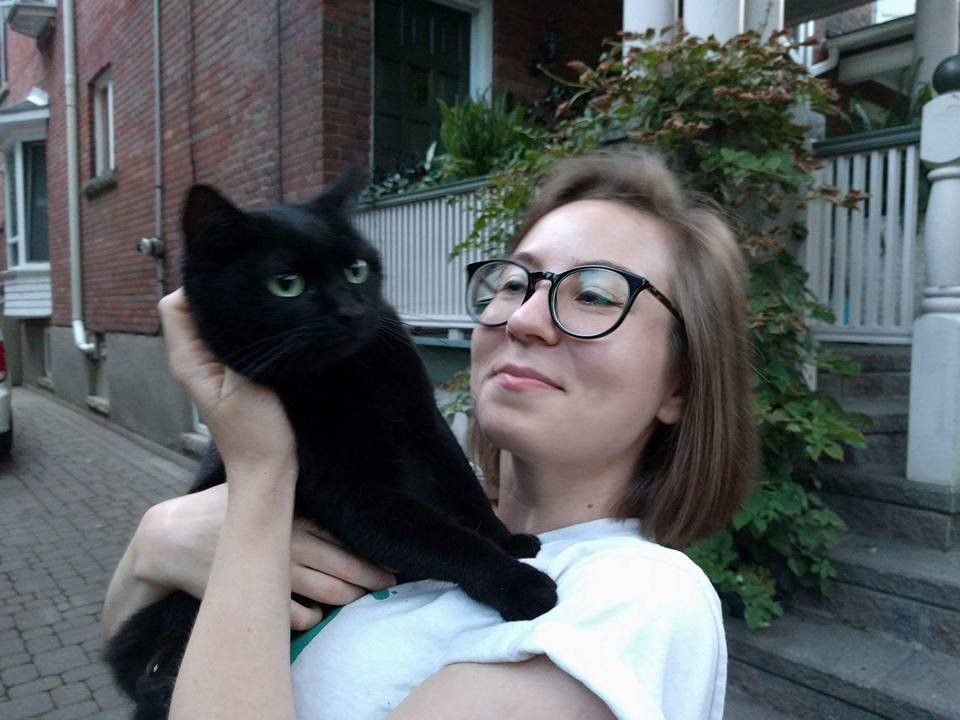Written by guest blogger, Julia Pyryeskina.
My field of study is contemporary activist history, with a focus on the Canadian gay and lesbian liberation. I am now starting to look at trans organizing in Toronto in the 1970s and 1980s.
In Becki L. Ross’s words, the winter of 1977-78 was a complicated “historical and political juncture” of several key events in the history of the gay and lesbian community in Toronto: the murder of twelve-year old Emanuel Jacques and The Body Politic’s publication of an article about adult-child relationships and its subsequent raid by the police had coincided with the short-lived victory of an ordinance to protect against discrimination on the basis of sexual orientation in Dade county, Florida, USA. With Anita Bryant’s Save the Children organization at the helm, a furious campaign by right-wing evangelical Christians had overturned the ordinance. Bryant was invited to tour Canada with her message, alarming Canadian activists — what were the repercussions of Bryant’s proselytizing North of the border, and what did this mean for the provincial campaign to include “sexual orientation” as a discrimination rubric in the Ontario Human Rights Code?
I came across the Anita Bryant protests when reading The Body Politic in the CLGA archives. In 1978, TBP’s Michael Merrill had offered an incisive analysis of the relationship between Anita’s homophobia, the election of a populist President and the rise of the far-right in US politics, which seemed oddly timely.
Issues that already divided gay activists from TBP and lesbian feminist mothers were again brought into stark contrast: Was freedom of the press more important than bad press for the gay liberation movement? Lesbian mothers struggling to retain custody of their children had little sympathy for gay men nostalgic about their own underage sexual encounters. In return, some gay men compared lesbians’ outrage about the sexual abuse of children with Bryant’s appeal to the institution of family as the basis for her homophobic rhetoric.
Because it was a complicated moment in time, it generated a lot of arguing – and, if documented, arguments make for really good archival material. Putting these things together helped me create a more detailed snapshot of what was happening. However, I still had trouble placing the events in the wider context. While the Bryant protests illustrated the divisions in the community, what relevance did they have for later political organizing?
CJH’s peer reviewers pushed me to expand the scope of my article to contextualize these events, and to analyze why it was important. With their feedback, and with advice from Dr. Gary Kinsman, I expanded the article to connect the organizing against Bryant with the short-lived, gay anti-right organizing in the early 1980s. Rilla Friesen’s support and insight led me the rest of the way.
However, the snapshot is limited. As Marcus Syrus Ware and Rinaldo Walcott have argued, The Body Politic and the CLGA documented white and cisgender gay histories, and have marginalized and erased voices of cis and trans Black and Indigenous people of colour. Moving forward, my goal is to engage meaningfully with critiques of the whiteness of mainstream gay and lesbian history in my work. As a historian, I strive both to work within the archives and to see their gaps.
Julia Pyryeskina was awarded the Linda F. Dietz Prize for the 2017-2018 academic year by the Canadian Journal of History/Annales canadiennes d’histoire. Her award-winning article, “‘A remarkably dense historical and political juncture’: Anita Bryant, The Body Politic, and the Canadian Gay and Lesbian Community in January 1978” is open access for a limited time.
The Linda F. Dietz Prize is awarded annually for the best article submitted by a graduate student registered at a Canadian university, or by a Canadian graduate student studying internationally.
 Photo Credit: Giselle Gos
Photo Credit: Giselle Gos
Comments on this entry are closed.